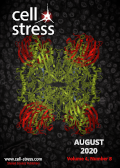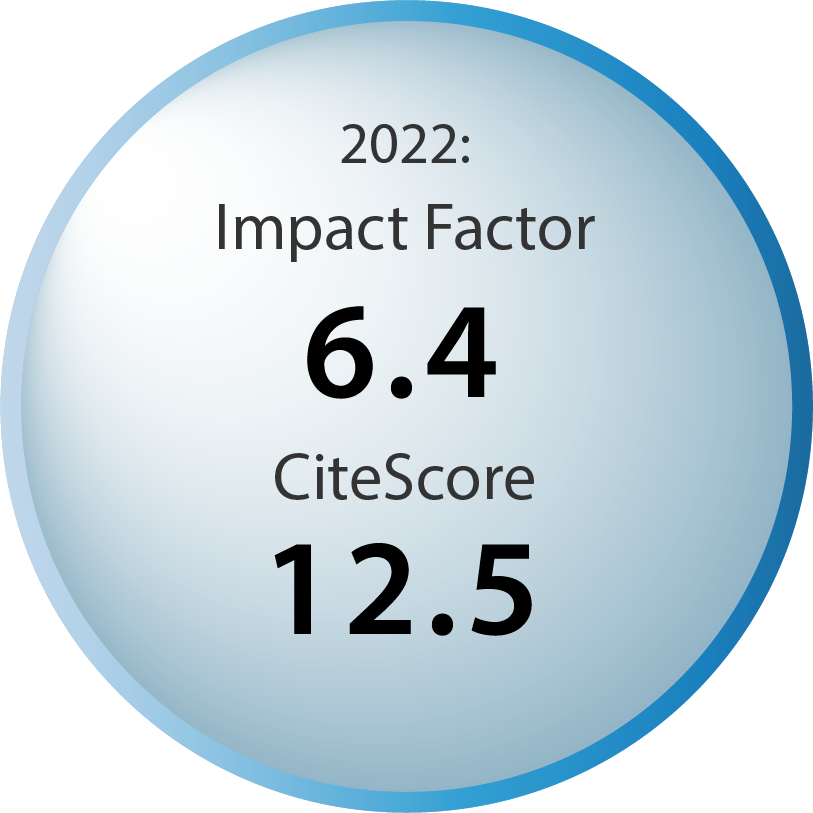Table of contents
Volume 4, Issue 8, pp. 191 - 217, August 2020
Cover: This month in
Cell Stress: Protein methyl transferases in cancer. Crystal structure of the human PRMT5:MEP50 complex. PDB-entry
4GQB by Antonysamy et al. (doi:10.2210/pdb4GQB/pdb). Backdrop shows H&E staining of invasive breast cancer cells (Public domain image by Dr. Cecil Fox). Image modified by
Cell Stress. The cover is published under the
CC BY 4.0 license.
Enlarge issue cover
Exploiting the circuit breaker cancer evolution model in human clear cell renal cell carcinoma
James J. Hsieh and Emily H. Cheng
Viewpoint |
page 191-198 | 10.15698/cst2020.08.227 | Full text | PDF |
Abstract
The incessant interactions between susceptible humans and their respective macro/microenvironments registered throughout their lifetime result in the ultimate manifestation of individual cancers. With the average lifespan exceeding 50 years of age in humans since the beginning of 20th century, aging – the “time” factor – has played an ever-increasing role alongside host and environmental factors in cancer incidences. Cancer is a genetic/epigenetic disease due to gain-of-function mutations in cancer-causing genes (oncogene; OG) and/or loss-of-function mutations in tumor-suppressing genes (tumor suppressor genes; TSG). In addition to their integral relationship with cancer, a timely deployment of specific OG and/or TSG is in fact needed for higher organisms like human to cope with respective physiological and pathological conditions. Over the past decade, extensive human kidney cancer genomics have been performed and novel mouse models recapitulating human kidney cancer pathobiology have been generated. With new genomic, genetic, mechanistic, clinical and therapeutic insights accumulated from studying clear cell renal cell carcinoma (ccRCC)–the most common type of kidney cancer, we conceived a cancer evolution model built upon the OG-TSG signaling pair analogous to the electrical circuit breaker (CB) that permits necessary signaling output and at the same time prevent detrimental signaling overdrive. Hence, this viewpoint aims at providing a step-by-step mechanistic explanation/illustration concerning how inherent OG-TSG CBs intricately operate in concert for the organism’s wellbeing; and how somatic mutations, the essential component for genetic adaptability, inadvertently triggers a sequential outage of specific sets of CBs that normally function to maintain and protect and individual tissue homeostasis.
PRMT5 function and targeting in cancer
Hyungsoo Kim and Ze’ev A. Ronai
Reviews |
page 199-215 | 10.15698/cst2020.08.228 | Full text | PDF |
Abstract
Protein methyl transferases play critical roles in numerous regulatory pathways that underlie cancer development, progression and therapy-response. Here we discuss the function of PRMT5, a member of the nine-member PRMT family, in controlling oncogenic processes including tumor intrinsic, as well as extrinsic microenvironmental signaling pathways. We discuss PRMT5 effect on histone methylation and methylation of regulatory proteins including those involved in RNA splicing, cell cycle, cell death and metabolic signaling. In all, we highlight the importance of PRMT5 regulation and function in cancer, which provide the foundation for therapeutic modalities targeting PRMT5.
Regulation of immune checkpoint blockade efficacy in breast cancer by FIP200: A canonical-autophagy-independent function
Syn Kok Yeo and Jun-Lin Guan
Microreviews |
page 216-217 | 10.15698/cst2020.08.229 | Full text | PDF |
Abstract
Immune checkpoint blockade (ICB) has emerged as a promising therapeutic strategy because of its potential to induce durable therapeutic responses in cancer patients. However, in the case of breast cancer, its application and efficacy has been limited. As such, combinatorial therapeutic strategies that can unlock the potential of ICB in breast cancer are of urgent need. In view of that, autophagy-related proteins that play a role in the autophagic cell recycling process have been implicated in the regulation of inflammatory and anti-tumor immune responses. Accordingly, autophagy-related proteins represent a group of prospective therapeutic targets in conjunction with ICB. In our recent study (Okamoto T et al. (2020), Cancer Res), we developed immune-competent mouse models of breast cancer which were deficient for the autophagic function of FIP200 or had FIP200 completely ablated to test the efficacy of ICB. We showed that although FIP200’s autophagy function was required for progression of PyMT-driven mammary tumors, FIP200’s canonical-autophagy-independent function was responsible for increased T-cell infiltration, IFN-signaling and ICB efficacy. These findings provide genetic proof of principle for a combinatorial therapeutic strategy that involves ablation of FIP200 to improve ICB efficacy in non-responsive breast cancers.



